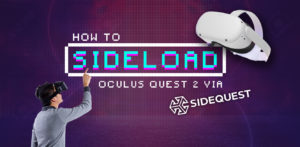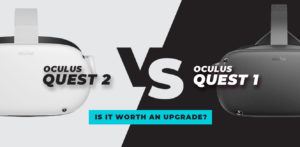Table of Contents
- Elevating Hand Tracking with Quest Update v56
- Reduced Latency and Enhanced Precision with Hand Tracking 2.2
- Meta Quest 2 vs. Apple Vision Pro: Navigating the Convergence
- A Glimpse into Hand Tracking’s Evolution
- Beyond Hand Tracking: The Power of Customization and Accessibility
- System-Level Live Captions and the Road Ahead
- Anticipation for Quest 3: Inheritance of Excellence
- Mastering the Virtual Touch: Must-Try Hand Tracking Games on Quest 2
- Pro Tips for Maximizing Your Hand Tracking Experience on Oculus Quest 2
- Overall
Elevating Hand Tracking with Quest Update v56
Meta’s latest Quest update v56 brings revolutionary enhancements to hand tracking and accessibility to revolutionize the VR experience. Thanks to Meta’s dogged pursuit of innovation, the gap between the Meta Quest 2 and the high-end Apple Vision Pro is gradually shrinking.
Reduced Latency and Enhanced Precision with Hand Tracking 2.2
One particularly noteworthy aspect of this version is the inclusion of Hand Tracking 2.2, a major improvement in the matching of physical and digital hands. For typical interactions, Meta reduces latency by 40%, while for fast motion, it reduces latency by a staggering 75%. This eliminates the possibility of misaligned replies and alleviates any discomfort by creating a smooth interface in which virtual hand gestures closely mimic real-world actions.
It may seem preposterous to put the $300 Meta Quest 2 up against the $3,500 Apple Vision Pro. Meta’s ongoing efforts to close the gap between the two through major improvements, however, cannot be disregarded.
The Apple Vision Pro’s hand tracking skills have been praised for their simplicity and fluidity. Journalists and thought leaders in the tech industry who have used it say it captures even the most subtle hand movements with remarkable precision.
Nonetheless, the newest update to Quest 2 rises to the task. Like the Apple Vision Pro, Hand Tracking 2.2 allows users to make in-VR selections with pinch motions. Meta has raised the bar for the industry with its promises of a 75% improvement in hand tracking speed and a 40% reduction in latency. In addition, the inclusion of “Fast Motion Mode” emphasizes Meta’s dedication to improving the user experience, adding to the thrill of already fast-paced games.
A Glimpse into Hand Tracking’s Evolution
Last year marked a major milestone with the release of Hand Tracking 2.0, which enhanced tracking reliability, gesture compatibility, and the ability to detect everyday hand motions. Improved tracking stability and faster hand position restoration after temporary tracking disturbances are only two of the new features in version 2.1. Version 2.2 is a major improvement in terms of speed, demonstrating Meta’s commitment to achieving unprecedented fluidity and precision.
Beyond Hand Tracking: The Power of Customization and Accessibility
Beyond just hand tracking, v56 also improves usability and makes the system more accessible. The “swipe to type” feature on the virtual keyboard is a novel addition that makes typing faster and easier than ever before. The Oculus Touch controller’s button remapping functionality also provides new avenues for personalization, making the system more accessible to players with and without physical impairments.
System-Level Live Captions and the Road Ahead
The Quest v56 upgrade adds system-wide Live Captions to broaden participation in virtual reality. Meta Quest TV, Explore, and the Meta Quest Store all support this option so that more people can enjoy the virtual reality experience.
Anticipation for Quest 3: Inheritance of Excellence
It’s worth noting that the thorough improvements made to the Quest 2 since its birth in 2020 will shape the Quest 3, the release of which we’re all eagerly awaiting. Future enhancements to tracking cameras and computing power should allow the Quest 3 to outperform its predecessor and compete with high-end solutions like Apple’s Vision Pro. Meta’s unwavering dedication to invention has caused the lines between realities to blur even further.
Mastering the Virtual Touch: Must-Try Hand Tracking Games on Quest 2
Using hand tracking to embark on a virtual exploratory expedition offers a world of fascinating possibilities. These games’ creative use of this cutting-edge tech displays the vast potential afforded by hand tracking in the digital world.
Vacation Simulator and Back to Job Expansions
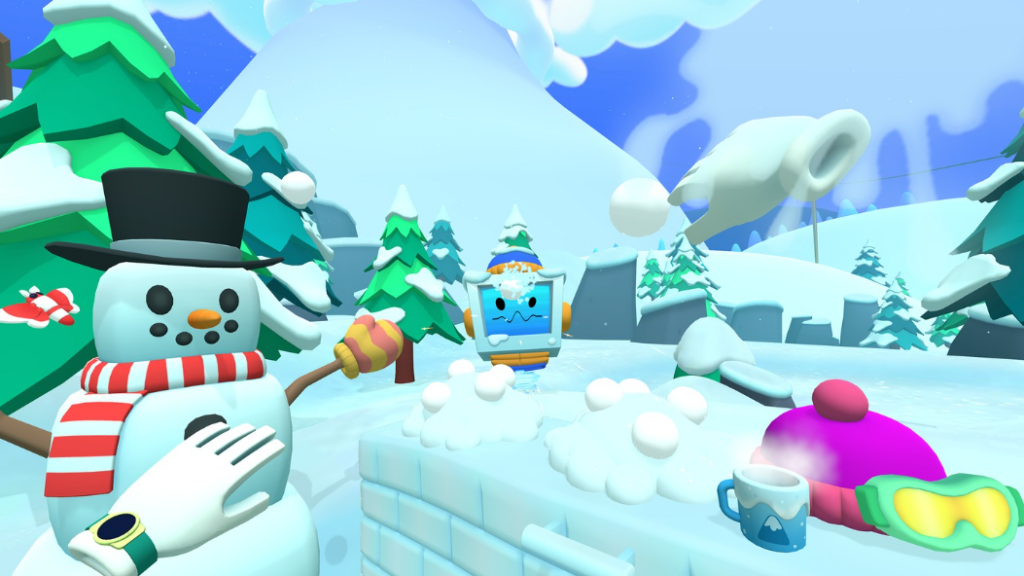
Photo from Meta Quest
The addition of hand tracking support was first seen in the critically acclaimed Vacation Simulator. It allows you to use your digital hands to perform a wide range of actions, transporting you to a vibrant vacation setting. The free add-ons for Back to Job make sure there’s plenty of fun stuff to do by incorporating gameplay elements from the original Job Simulator.
Waltz of the Wizard
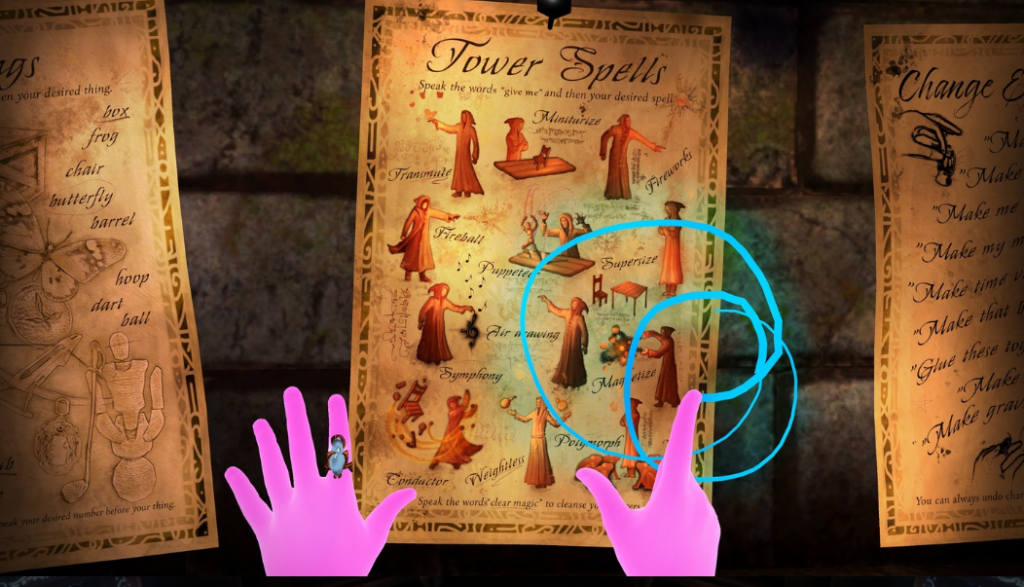
Photo from Meta Quest
Waltz of the Wizard is a hand tracking game with a mystical air. You can use your hands to do magic and alter the virtual world in this captivating experience. There are some issues, but overall, it provides a magical experience that sticks with you.
Little Cities
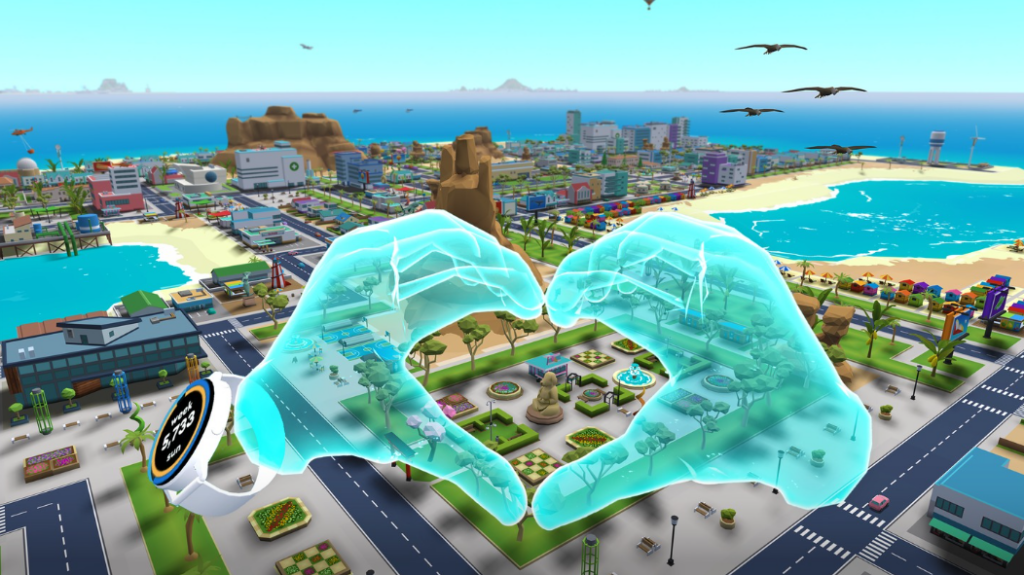
Photo from Meta Quest
Hand tracking is a unique addition to the city simulation genre that Little Cities explores. Its user-friendly interface emphasizes city administration via imaginative layouts, providing a refreshing mix of strategy and style. The fun and graphically impressive city-building experience is guaranteed by the game’s concentration on VR-friendly mechanics.
PianoVision
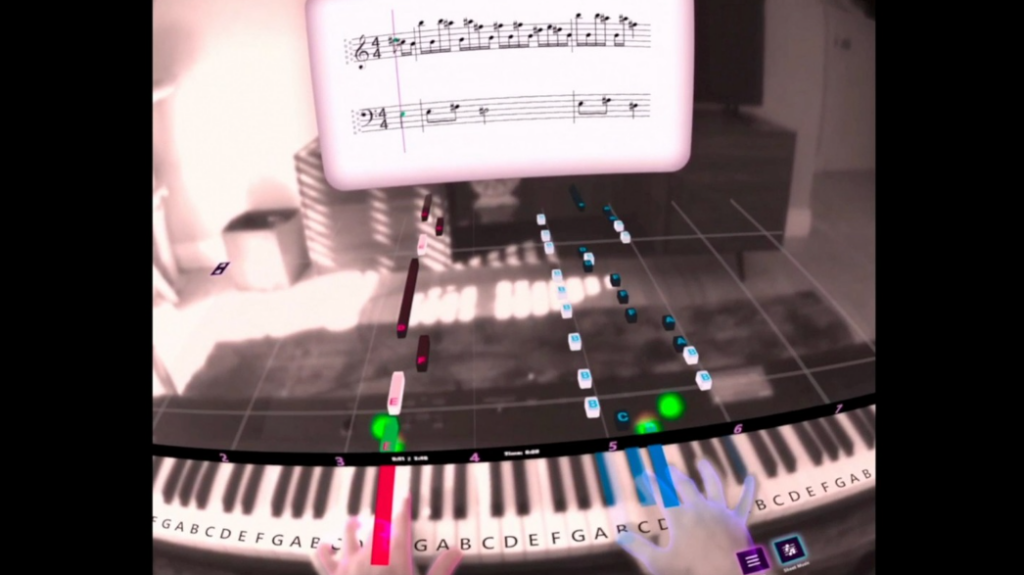
Photo from Meta Quest
PianoVision skillfully marries hand tracking with musical instruction. This program takes a novel approach to teaching music by superimposing a virtual piano on top of your actual keyboard and recognizing your fingers while you play. This piece of software gives us a taste of what virtual reality could do for education in the field of music.
Unplugged
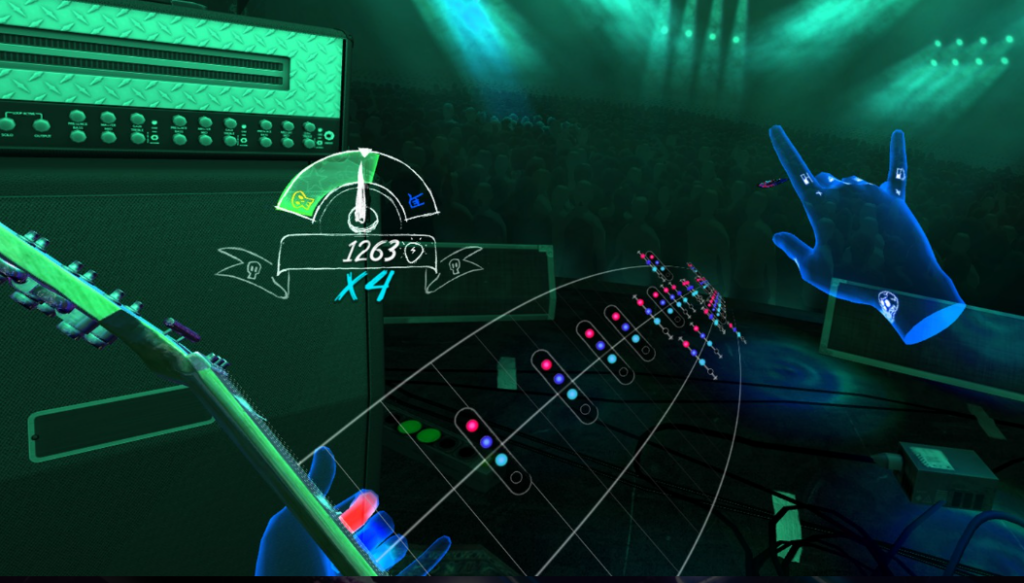
Photo from Meta Quest
Unplugged’s use of hand tracking to create a new type of rhythm game is groundbreaking. Inspired by timeless classics like Guitar Hero, this virtual reality experience allows you to unleash your inner rock star by wailing on an interactive air guitar. The addition of hand tracking breathes fresh life into the musical experience, providing an authentic, enveloping feeling of playing air guitar. Not only is this one of the best VR experiences available, but it’s also one of the best rhythm games on any platform.
Tiny Castles
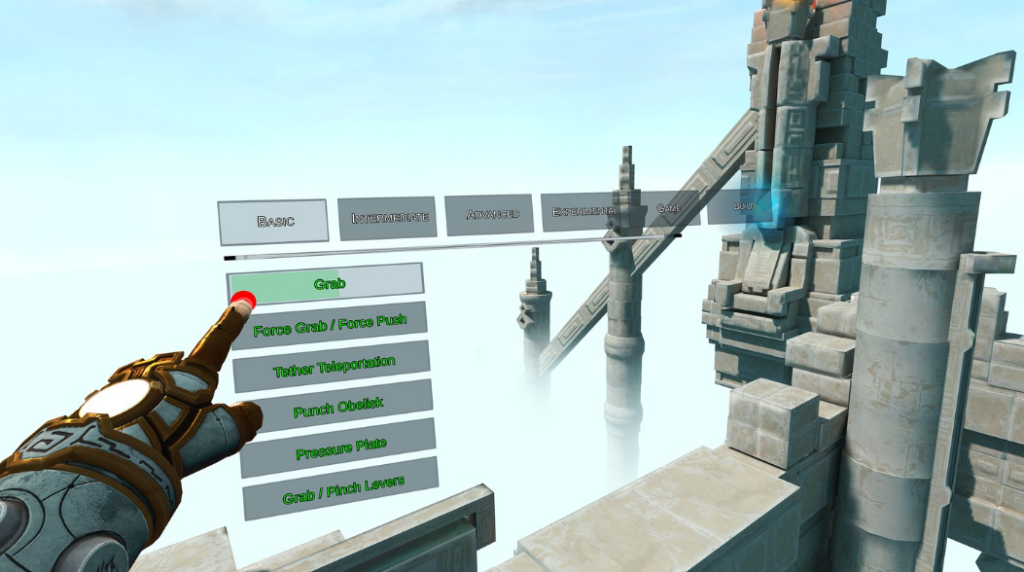
Photo from Meta Quest
Tiny Castles is an action-adventure game with a focus on hand tracking. This brief but interesting game demonstrates the possibilities of hand tracking for immersive gaming with mechanisms designed to improve magic-wielding. Best of all, it’s free! So there is no excuse not to try this one out.
Tea For God
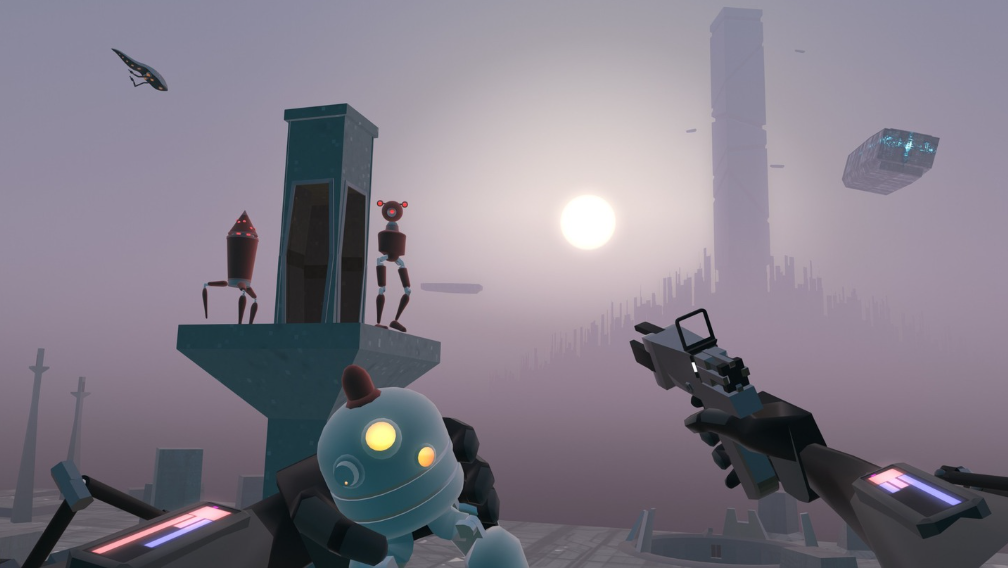
Photo from Meta Quest
In Tea for God, you’ll find a unique combination of hand tracking and randomly generated environments. Hand tracking makes it easy to turn your movements in the game’s environment into in-game effects. Combat, crafting weapons, and exploring the world all have a natural and immersive feel. The clever design of the game means it also utilizes whatever play space you have and makes you feel like you’re walking in infinite space without the risk of knocking over your Granny’s favorite vase. Very clever!
Pro Tips for Maximizing Your Hand Tracking Experience on Oculus Quest 2
Follow these steps to maximize the Oculus Quest 2’s hand tracking capabilities. These tidbits will help you get the most out of your VR experiences, whether by facilitating more fluid interactions or enhancing your precision.
Well-Lit Environments Enhance Tracking: Hand tracking relies on the Quest 2’s cameras to detect your hands. If you want precise tracking, you’ll need to be in a well-lit, evenly-lighted area.
Mind Your Hand Placement: Keep your hands within the Quest 2’s field of view, and avoid obscuring them behind your body or other objects. Keep your hands where they may be seen easily by the cameras.
Clear Background Space: Minimize background clutter that could confuse the tracking system. The cameras will be able to better capture your hands if they are in front of a simple, unobtrusive background.
Experiment with Hand Gestures: Different experiences may respond better to specific hand gestures. Find the most natural and responsive motions for your fingers and hands to make interactions more enjoyable in each game.
Smooth and Deliberate Movements: Hand tracking excels at tracking smooth and deliberate movements. When performing precise tasks, a small slowing of your gestures will yield better outcomes.
Utilize Finger Tracking: Take advantage of individual finger tracking by spreading your fingers apart when interacting with objects. This has the potential to improve precision and deliver a more compelling adventure.
Update Your Software Regularly: Oculus releases updates to improve hand tracking and overall performance. If you want to be sure you’re getting the most out of the newest features, you should upgrade your Quest 2 headset and games regularly.
Calibrate Your Guardian Boundary: Recalibrate your Guardian boundary to ensure it accurately reflects your physical surroundings. This can increase your security by decreasing the likelihood of unintended physical contact with real-world things.
Engage in Experiences Designed for Hand Tracking: Seek out games and applications explicitly designed for hand tracking. These events frequently make the most efficient use of the technology and can highlight its special qualities.
Patience Pays Off: While hand tracking has improved significantly, it may still have occasional glitches. If the cameras are having trouble keeping up with your movements, stop for a second or switch where your hands are and see if that helps.
Keep Your Hands Relaxed: Maintaining a relaxed hand posture can help reduce hand fatigue during extended VR sessions. If you don’t hold your hands in a clenched fist, your interactions will feel more relaxed and natural.
Customize Controls Where Possible: Some games offer control customization options. Make use of these settings to customize the hand tracking controls to your playing preferences.
Practice Makes Perfect: Like any skill, practice improves your hand tracking proficiency. Spend some time in a virtual reality (VR) experience that makes use of hand tracking to get used to and proficient at using this method of interaction.
If you follow these guidelines, your Oculus Quest 2 hand tracking experience will be smooth, immersive, and responsive. Whether you’re casting spells, constructing cities, or taking part in thrilling combat in VR, mastering hand tracking will give your experiences a whole new level.
Oculus Quest 2 Hand Tracking Frequently Asked Questions
What is Oculus Quest 2 hand tracking?
Oculus Quest 2’s cutting-edge hand tracking technology allows you to use your own hands to manipulate in-game objects, doing away with the need for separate controllers. It reads your hand gestures and translates them into actions within virtual reality, letting you control items, cast spells, and do other things.
How does hand tracking work on Oculus Quest 2?
To monitor your hands, the Oculus Quest 2 makes use of its integrated sensors and cameras. It records your finger’s position, orientation, and motion so that you can manipulate virtual objects.
In virtual reality, what are the advantages of hand tracking?
In addition to providing a more natural and intuitive means of interacting with virtual surroundings, hand tracking also improves immersion. More immersive experiences are possible, particularly in games and apps that are built on hand movements because the physical barrier of controllers is removed.
Which games support hand tracking on Quest 2?
Hand tracking is included in several Quest 2 games, creating exciting and novel gameplay opportunities. The games Vacation Simulator, Waltz of the Wizard, Little Cities, PianoVision, Unplugged, Tiny Castles, and Tea for God stand out as especially good examples. These games’ varied mechanics and interactions are made possible via hand tracking.
Is hand tracking as accurate as using controllers?
Although hand tracking has improved greatly, it still may not be as exact as utilizing controllers when it comes to performing specific tasks. As the technology evolves, it becomes a more attractive option for encounters that don’t have a high degree of precision.
How do I enable hand tracking on my Oculus Quest 2?
On the Oculus Quest 2, it is common practice to have hand tracking turned on by default. The headset ought to figure out that you’re holding anything as soon as you put it on your head and start tracking your hands. If you want to make sure that hand tracking is enabled and working properly, you can do so under the settings.
Can I use hand tracking for all games and applications?
The availability of hand tracking varies widely between games and software. Although hand tracking is becoming increasingly common in interactive media, not all games may make optimal use of this capability. See if hand tracking is supported by reading the game’s description or patch notes.
Are there any limitations to hand tracking?
The difficulty of accurately monitoring fast hand motions is one of the limits of hand tracking. When fingers are close together, it may have trouble locating them. Low light and busy backdrops might also hinder the tracking’s accuracy.
How can I improve my hand tracking experience?
Make sure you’re in a well-lit area with minimum distractions for the best hand tracking results. Don’t block the camera’s vision by hiding your hands out of frame. Hand tracking performance can be enhanced by maintaining a regularly updated Quest 2 headset, as well as by playing regularly updated games.
Keep in mind that hand tracking is an ever-evolving technology that improves with time and new versions of the program. The functionality and potential uses of hand tracking on Quest 2 and future VR devices will develop in tandem with the Oculus ecosystem.
Overall
Hand tracking in virtual reality is no longer just a technology; it’s an entryway to more engaging interactions, fresh experiences, and more refined game dynamics. These top picks demonstrate the myriad ways in which hand tracking may enrich the VR experience, providing a glimpse into the promising future of this cutting-edge medium. The inclusion of hand tracking improves the usability of virtual reality. It’s a more accessible solution for people who have trouble using standard controllers owing to, say, a disability. This move toward diversity and inclusion increases the number of people who can enjoy virtual reality.
The ability to track a user’s hands is a major step forward for VR. We may expect interactions to be even more precise and responsive as technology develops. Oculus Quest 2’s implementation of hand tracking paves the way for future VR devices in which users can switch between using controllers and their natural hand movements with ease, depending on the situation.
In conclusion, the Oculus Quest 2’s hand tracking ushers in a brand-new age of virtual reality (VR) interaction. The way we interact with virtual worlds is revolutionized by its combination of intuitive motions, ease of use, and imaginative potential. Hand tracking is poised to become a defining element of virtual reality as the technology develops and more experiences are adapted to its capabilities.


